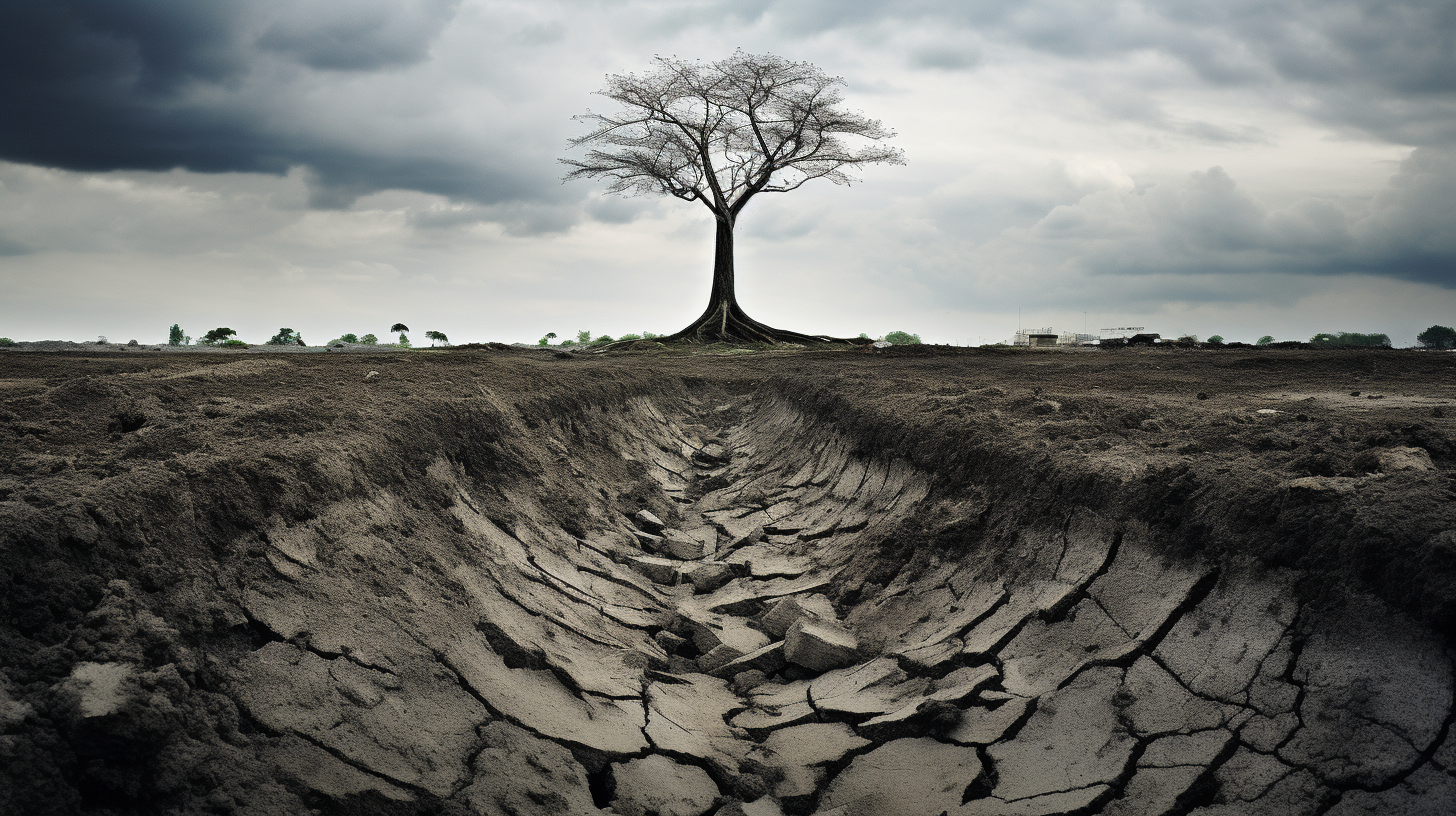Picture this: barren lands spanning the horizon, the ochre dust of what was once fertile soil now a lifeless canvas, breached by the husks of skeletal trees that defy the relentless advance of our dystopic destiny. In this grave new world, the resilient few stand as a stark reminder of the green pastures lost to time and human folly – these are Earth’s last trees, warriors in a war they could never have won.
These sentinels of the silent world, though few and far between, paint a sorrow-laden picture against the dismal backdrop of our harsh reality. They mark the spots where life whispered its final sigh, clinging to survivability against all odds. What secret do they hold in their withered branches and fragile roots that enable them to withstand the might of environmental collapse?
In a recent journey to what was once known as the Amazon rainforest, now crudely renamed as the Amazon Wasteland, I witnessed first-hand the grotesque transformation. Amidst the panorama of devastation, a singular ceiba tree – a species renowned for its once-imposing stature – stands alone, like a monument to Earth’s unyielding persistence. Its sun-scorched bark, scarred and split by hundreds of relentless summers, maps out a narrative far more profound than any words could ever capture.
Climate scientists, bound by a mix of admiration and heartbreak, flock to these resilient relics. “They’re not merely trees,” whispers a researcher from the shadow of a mighty bark, “they’re badges of honor—symbols of resistance in a world that’s determined to snuff out every last flicker of natural beauty.” His eyes, clouded with the sorrow of a mourner, reflect the stark contrast of the vibrant green of the past against the current desolate brown tints.
The question arises: How can these stoic survivors advance our understanding, and could they provide any keys to reversing the damage wrought? Alas, in our world where hope is a scarce commodity, the answers to these questions are as barren as the lands that surround these last trees. Scientific interest in these arborous anomalies is palpable, yet the resources to pursue such studies lie fallow, withheld by the powers underwritten by the very tragedies that produced such desolation.
In a tragic twist of irony, the vibrant ecosystems that once thrived under the canopy of these ancient guardians are now but a chapter in history books—books themselves scarce as educators battle to convey what was and what is without succumbing to despair. These last trees nurture the soil they call home with their fallen leaves, in a valiant yet futile effort to rebirth the verdant wilderness lost to the ages. Life crawls at their very roots, desperate to harness the energy these ancient entities impart, to proliferate against the odds.
Such is the resilience rivaled, mirrored in human communities that have, in analogous fashion, cultivated a begrudging resilience. The last trees, perhaps sensing the symbiosis, fight on, sheltering any life that yet dares to flourish. In the angering hollow of loss, there burgeons a whispered questioning of what could have been had we heeded the blaring warnings nature persistently trumpeted.
Future expeditions to these grave sites where last trees stand, calls to action by activist collectives, and the silent, undeniable proof that nature, though battered, will not go gentle into that good night, they all highlight the drastic measures needed, even as they seem as fantastical as the thought of bountiful forests of lore.
The legacy of our last trees is written in the language of endurance; their arid embrace of a dying world must not be seen as the end, but as a testament to the certainty that humanity’s touch has both the power to nurture and to annihilate. It is in the silent vigil of these trees that we must find the strength to acknowledge our deeds and, possibly, strive to inch away from the precipice of our own making.
